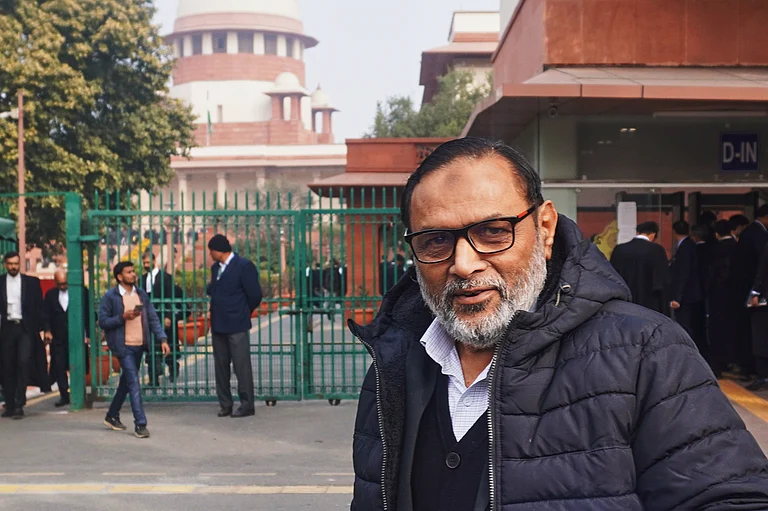Manipur is in turmoil for the past few months. To understand why this is so and the way forward, we will have to take a look at its geography and a bit of history. Manipur has a fertile valley with mountains on all sides. The valley is inhabited by the Meiteis and the surrounding hills by Naga and Kuki tribes. Manipur claims continuous recorded history from 33 AD. Meiteis, the people of the valley, believe that land first appeared in the area known as Kangla. This was seat of power for centuries.
In the 18th Century, Pamheiba, the Manipuri king, invaded Myanmar and went up to Awa. He also crossed the western hills and went right up to Sylhet (now in Bangladesh). It was he who introduced Hinduism in Manipur. In fact, he also changed the name from Kangleipak to Manipur.
The administration centred around the king and his family, but the day to day administration was carried on under the pana system, in which loishangs (departments) had a lot of autonomy. The tribal villages had their own independent administration and interacted with the Manipur administration through an interpreter. The people of Manipur had a distinct culture, religion, tradition as well as the practice of writing indigenous script.
The ancient boundary of Manipur was up to the Chindwin River, which meant the Kabaw Valley was in Manipur. In 1834, after the second Anglo-Burmese war, which the English history claims to have won but were obliged to hand over the Kabaw Valley to the Burmese in return for 500 sicca to be paid to Manipur. A version is that annual due was to be paid to Manipur by India till 1952.
This original boundary had the effect that the same tribes—Naga and Kuki—now inhabit both in Manipur and Myanmar with frequent social interaction. This is the genesis of frequent crossing of border by these people. The Free Movement regime permits crossing over the border for a day within 16 km, but this has been suspended for the time being due to the conflict in Myanmar.
With the current situation in Myanmar, a large number of Kuki people have crossed over to India creating an imbalance in population. The UNHCR pegs the number of migrants from Myanmar during February 2021 and May 1, 2023 at 53,500, though authorities in private concede that this number is much higher. However, there has been fresh influx due to the escalation of the conflict between Junta and rebels; and thousands have already crossed over to India.
With Nagas and Kukis recognised as tribals, they enjoyed certain advantages over the Meiteis who were denied the status. As mentioned before, the rest of India (or the powers that were) did not understand the status of Meities. They had their own culture and customs but as they were a part of Hindutava, they were considered to be advanced and hence not tribal, even though all other criteria were met. It might be mentioned that when King Pamheiba introduced Hinduism, he created only two castes – Brahmins and Kshtriyas. But the Kaka Kalelkar Committee could not envisage that being Hindu, there would not be scheduled castes amongst them. They artificially recognised some as scheduled castes.
In June 2013, the Ministry of Tribal Affairs wrote to Manipur government asking for its response to the petition for ST status of Meitei. The present trouble has arisen after the Manipur High Court went over the evidence and concluded that question of considering Meiteis as tribals deserved a study on merits by the Government of Manipur (and as a corollary by the Central Government). This would bring tribal status to all residents of Manipur, except a miniscule population of Nepalese, Marwaris and others from the western areas. The grant of tribal status to Meiteis would mean sharing of privileges accorded to tribal with Nagas and Kukis. In this era, the Kukis are affected more due to the influx of a large number of Kukis from Myanmar after the takeover by the Army there. There is nothing to distinguish Kukis from Myanmar (called Chin) and Kukis from India as they traditionally inhabit on both sides of the border.
Recently, a section of the Kukis asked for administrative autonomy. It may be noted that partial autonomy is already available through the Hill Areas Committees. The Kukis have stopped short of asking for a separate state, but the effect will be the same. This would mean division of Manipur which has existed for the last two millenniums. Further division in this atmosphere of animosity would be detrimental to the entire population of Manipur.
Perhaps, the solution lies in the empowerment of the existing District Councils with certain financial autonomy and linking the district level Councils with the village level authority. This will be similar to the Panchayati Raj System elsewhere, but with specific provisions tailor made for the hill administration.
Violence is not the solution to the problem and the extreme views would not help. The demand of tribal student union to not even consider the question of grant of tribal status to Meiteis is against natural justice. They can put their point of view before the authority concerned but to say that it should not be even considered is against all democratic principles. In short, the Meiteis meet the various criteria of being declared tribal, a privilege that has been denied to them for long.
KK Sethi, IAS (Retd) is former Chief Secretary Manipur and Commissioner of the National Commission for Linguistic Minorities





















